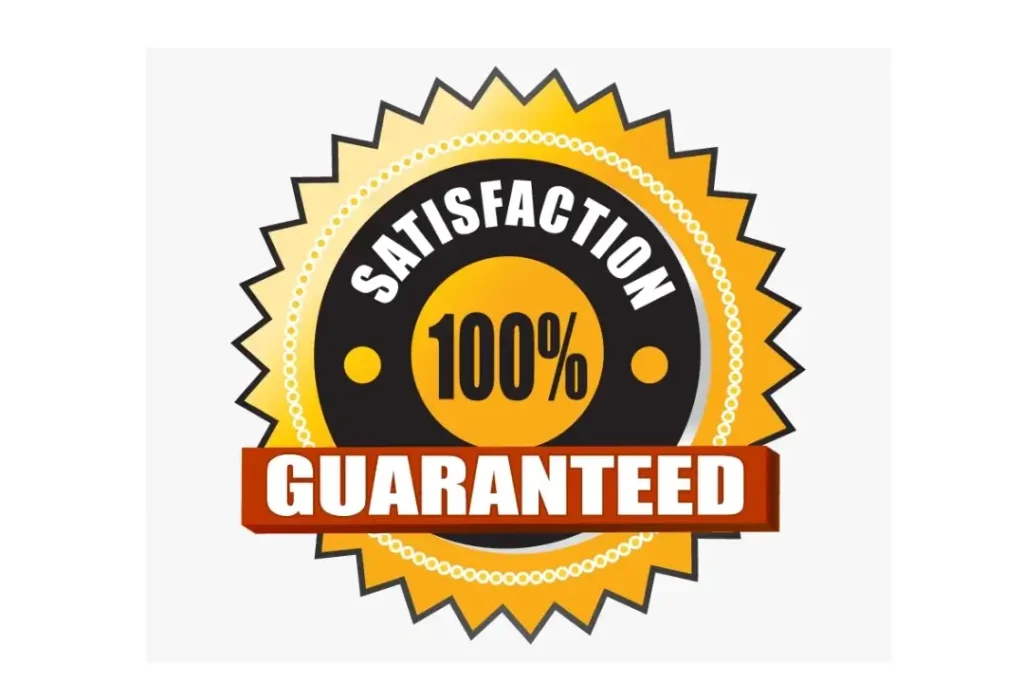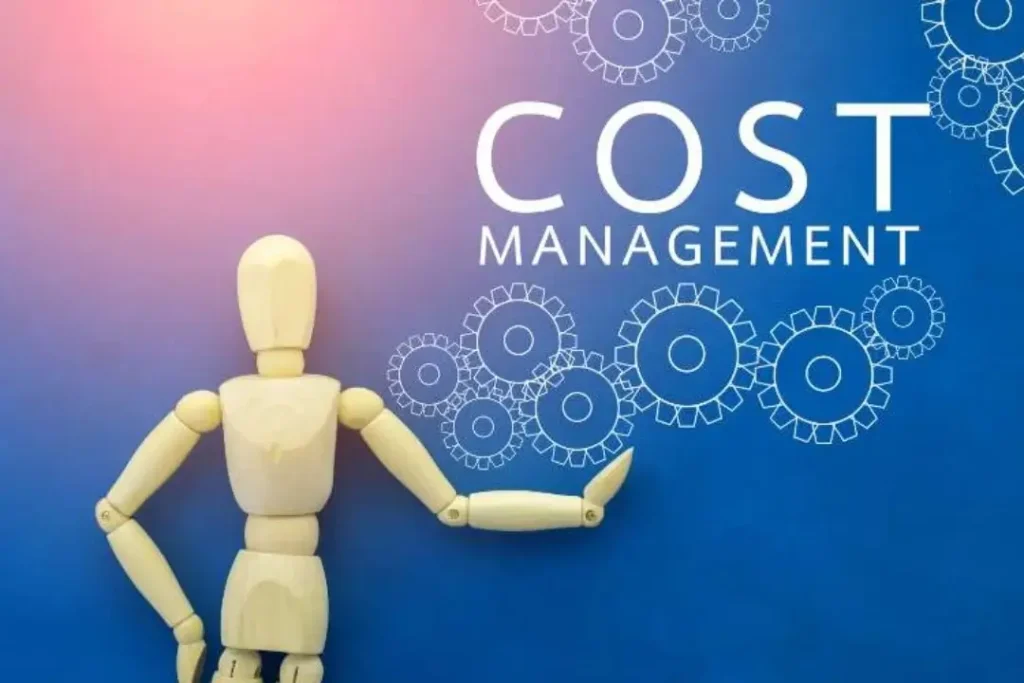
Why Clothing Brands Fail
Top Different Types of Shirts for Women and Men Top Different Types of Shirts for
What Is Supply Chain Management in Jacket Manufacturing? The Secret Strategies for Effectiveness, Cost Reduction, and Competitive Advantage
A good supply chain is the backbone of a successful jacket business. It drives a seamless system for product manufacturing and its arrival at consumers’ doorsteps. That is why neglecting supply chain management can even cost a business thousands of Dollars.
In the competitive world of jacket manufacturing, having an effective supply chain is very important for the business because it helps you work better than your competitors. An efficient supply chain keeps customers happy and makes them return, but a lousy supply chain can drive them to your players. Typical supply chain issues can be solved easily by adopting best practices to reduce the risks of delays and quality problems. So, in this comprehensive blog, let’s look at the best practices to help you progress your operations for better success.
In jacket manufacturing, timely delivery is quite crucial. It can cause problems in receiving materials or in the production itself, affecting your capacity to deliver orders. For example, you have a huge order for a new jacket line, but your fabric supplier needs to be on time. This delays production and causes lost sales and unhappy customers. In the fast fashion world, your customers expect to receive their orders when they should. Keeping your supply chain well-organized and preparing for any possible delays is a way to guarantee your production is in line and that you make your delivery dates so that your customers are happy.

Quality is essential in jacket manufacturing because this affects customer satisfaction and your brand’s reputation. Checking every single step in your supply chain certifies quality without interruption. When you get the raw materials to finish the jackets, strict quality checks confirm that each jacket meets your exacting standards. Tracking methods and quality checks permit you to catch the problem early and solve it fast. Quality is not just a result of high-quality products but helps prevent returns and guarantees customer devotion. You want to enjoy returning business from customers who believe in the quality of your jackets.
Investing in your supply chain can benefit you and lessen costs. In manufacturing jackets, incompetence leads to waste and higher spending, which are directly realised in higher costs and lower profits. You can cut unnecessary spending by making your processes more effective, from raw material sourcing to production and delivery. Using data to identify bottlenecks and adopting just-in-time inventory can minimise extra stock and waste. Also, building good relations with your suppliers can guarantee you get better deals. A better supply chain increases your profits and lets you provide competitive prices without compromising quality or service.

A strong supply chain is the cornerstone of competitive advantage in a globalised market. Brands with an effectual supply chain are more likely to attract international clients who value consistency. If you can prove that you have a strong supply chain that delivers superior jackets on time, you can become a preferred supplier in other markets. Good supply chain management supports you in responding rapidly to changes in global demand, managing risks in international shipping, and following diverse market rules. This can give you an edge over participants who struggle with their supply chains. Overall, a well-organized supply chain progresses how you operate and strengthens your brand’s reputation as a reliable partner in jacket manufacturing.
The first step in making jackets is sourcing the right materials. This means selecting good, environment-friendly materials, which determines the quality of how well your jackets work and last. It also speaks of what your brand stands for. Most shoppers care about their purchases and the impression of these purchases on the environment; thus, using sustainable materials helps your brand stand out. Certifications such as GOTS and OEKO-TEX confirm that your traders stick strictly to environmental and social criteria. Using certified suppliers lets consumers know they are purchasing responsibly, which raises confidence and trustworthiness in the brand.
Understanding how jackets are made is vital for competent supply chain management. All cutting, sewing, and finishing processes require careful efforts at each stage. The first step, cutting, involves planning how to use fabric wisely so there is no waste. Sewing requires skilled workers to confirm that the seams are strong and meet quality standards. Finishing steps like ironing and quality checks are essential in producing jackets. Investing in skilled workers, modern machines, and effective methods can speed up production and improve quality, leading to happier customers.

Logistics and shipping are key components of a good jacket-making supply chain. Proper inventory management and warehouse practices will help guarantee you have the right products at the right time. A well-organized inventory system can track stock, eliminate excess or missing items, and progress order accuracy. The organisation of the warehouse for easy access will cut down delivery times. For shipping, relying on trustworthy carriers and thoroughly working out the shipping routes can make deliveries faster and low-priced. Communication with customers about tracking information aids boost their buying experience as well.

Refrain from considering after-sale service improvements in your supply chain, too. Talking to customers after the sale for feedback is very helpful in comprehending how they feel regarding your jackets. This feedback will give you data on the quality of a product, delivery time, or overall satisfaction, which, in the future, lets you make informed decisions. Return rates and warranty claims, together with customer reviews, can lead to finding faults in your chain of supplies. After-sales feedback shows your clients that you care for opinions, loyalty, and possibly buying from you again. By considering after-sales service within your supply chain, you can expand every bit of your jacket production to make your process much more efficient and boost your brand.
Delays in receipt of materials can create a big issue in jacket production. Usually, such delays arise from problems with suppliers or a sudden surge in demand. For instance, if you rely on one supplier for the fabrics and they have a problem with production, it will change your whole timeline. Also, the demand can shoot up quickly during peak seasons, creating shortages. So, it becomes even more challenging. To minimise these risks, try to work with several providers and develop a good relationship with them. Then, you will have backup options if one of the sellers has problems. You can also manage unexpected increases in demand by having extra stock, making it easier to fulfil orders.
Quality control problems are another common issue in the jacket business that can hurt the quality of your products. Problems like patchy stitching or lousy handling of materials during shipping can lead to defective jackets that need to meet your standards. These defects can cause high return rates and damage your brand’s standing. To address quality issues, firm quality checks should be set at each supply chain step. This may include inspecting suppliers’ facilities, using quality control techniques during production, and properly inspecting before shipping. Focusing on quality throughout your supply chain can reduce defects and keep customers happy, building brand constancy.

Higher costs are another challenge for keeping a good supply chain in jacket manufacturing. This also changes material prices and might affect market trends or supply problems. Fuel can go up fast and increase your shipping costs, which add up quickly. To battle this cost, you need to be more thoughtful about who you get your materials from and where you are making purchases. Long-term agreements with suppliers will stabilise material costs, and you will not face changing expenses. Searching for local suppliers can also reduce transportation costs and expedite delivery times. Monitoring your productivity can help identify areas to save money without compromising quality.
Environmental concerns are now an important issue for many brands’ supply chains. Poor waste management can hurt sustainability and affect how the public views your brand. For instance, mishandling materials can produce significant waste, while improper disposal of non-biodegradable materials results in pollution. As an accountable brand, you should guarantee using environmentally friendly practices in your supply chain, beginning with raw material sourcing. Consider utilising recycled or ecologically friendly sourced materials. Decrease production waste. Engage suppliers that stand by the environmental law and best practices to help develop an environment-friendly supply chain. By addressing environmental issues, you not only connect your brand with responsible consumer values but also support a more sustainable future in jacket making.
For supply chain improvement in manufacturing jackets, you must ensure you manage your suppliers appropriately. Long-term relationships with consistent and strong providers certify that the material quality is good to progress your coat constantly. This creates stability within the working environment as well. Checking on your suppliers regularly also requires much attention; this will confirm they uphold and meet the required standards regarding both quality and the environment, as any problem arising can be observed early. This helps lessen disturbance and open relations of mutual benefits for parties on both sides.

Positioning new technology into a supply chain makes a more significant difference. Using tools like AI and ERP systems services, you track inventories and predict requirements better. This means reacting more quickly to changes in what customers want. Also, blockchain technology makes tracing materials easier and guarantees that everything is sourced responsibly. This builds trust with everyone involved and helps confirm that your suppliers are honest about their sustainability claims, refining your brand’s image.
Vigorous quality checks are the most critical aspect of reducing problems in making jackets. Methodologies such as Six Sigma and Lean Manufacturing help cut down on waste and provide scope for constant quality improvement. By carefully assessing your processes, one can identify and precise a problem before it becomes unmanageable. Quality checks at every manufacturing stage will safeguard early detection of the issues. Commitment toward quality confirms customer satisfaction, and their loyalty to the brand occurs.
Because more customers take care of the environment, now it is significant to integrate eco-friendly practices in supply chains. Working with logistics focusing on sustainability reduces one’s carbon footprint and means your brand cares. Reusable and recyclable packaging can remove unnecessary waste or save money in packaging over time. You respond to customer needs and help create a better future for the industry by making sustainability a core component of your supply chain strategy.

Better logistics will be the key to guaranteeing that goods arrive at their destination on time and smoothly. Given current traffic and past data, predictive analytics can help you determine the best shipping routes, reducing shipping times and costs. Partnerships with logistics providers will confirm your support and dependability for timely deliveries. These partnerships can also result in better shipping rates and new solutions for distribution challenges, increasing customer satisfaction.
Keep pace with the dynamic jacketing world by investing in your people. Ongoing training in up-to-date supply chain and quality practices develops an improvement culture that lets your employees hold the tools and practices introduced into their workplace. Good people identify issues and provide potential solutions for improving processes for better results in your supply chain. Continued training reveals that you value your employee’s growth, which can lead to more job satisfaction and less turnover. In this way, investing in your staff supports long-term success in your supply chain management.

To find ways to progress and stay competitive, measuring your supply chain’s effectiveness is critical. You can recognise how well your supply chain is employed with precise Key Performance Indicators (KPIs) and supportive tools. Here’s how to measure achievement in your jacket trade supply chain.
This KPI exposes how acceptable you see customer delivery expectations. A high rate means you deliver products on time, which makes customers pleased and builds trust. By watching this KPI, you can advertise problems in your supply chain and fix them to work well. Keep your delivery rate to 100% to show clients you are consistent.

This KPI helps you maintain high standards in making jackets. It measures how many products meet your quality goals. Checking this regularly will help you find quality problems early, and with these solutions, you can diminish the defects. A good quality compliance percentage leads to happier customers and fewer costs from returns and repairs.
This KPI determines how well you manage your stock. A high ratio means your jackets sell well and you manage your inventory well. This guarantees you do not overstock, reduces costs, and improves cash flow. With turnover rates, you make smart choices about restocking and what you sell based on market needs.
As companies become more conscious about being environmentally friendly, it is essential to track the carbon footprint of each jacket. This KPI measures the environmental impact from pakistan sourcing materials to delivery for making jackets. Monitoring your carbon footprint will allow you to look for ways to be more resourceful and use greener methods. Reducing your impact will help meet the customer’s demand for sustainability and improve your brand’s status.
You can use specialised software to measure these KPIs and advance your supply chain. Some good options include:
As jacket manufacturing changes, it’s crucial to keep up with new trends in supply chain management to stay successful. These trends expand how things run and meet consumers’ desires for quality, sustainability, and quick responses. Here are three main trends that will shape your industry’s future of supply chain management.

Imagine being able to create a digital version of your entire supply chain. This is what Digital Twin technology does. With digital twins, you can model everything in your supply chain, from getting materials and making jackets to shipping them-using real-time data to see how well things are working and find problems.
This technology qualifies you to test changed plans, such as how much stock you may have or who you might work with in terms of providers, and then see its influence on your corporation. It benefits you by making intelligent decisions that raise the speed and flexibility of your supply chain, putting your deliveries earlier and your customers at an advantage. With digital twin technology, your jacket industrial business can react quickly to market changes.
This leads to being environmentally friendly; Green supply chain practice is essential. Most customers want brands that care for the planet, so they need carbon-neutral shipping, including sustainable materials.
A green supply chain practice requires that you consider the entire process of your making, from using eco-friendly fabrics to finding transportation routes that reduce carbon emissions. You can partner with suppliers who focus on sustainability and guarantee the use of packaging that lessens leftovers. You can also employ technologies that track and share your carbon footprint for each jacket produced to help consumers see your commitment to sustainability. Adopting green practices will help the environment and enhance your brand image in a market that prefers eco-friendly choices.

Another vital aspect of supply chain management is collaborative networks. As global supply chains become more complicated, sharing resources with other brands can save money and improve efficiency. Collaborative networks allow you to share information and best practices with other jacket manufacturer, logistics partners, and players.
Through sharing, you reduce the cost of purchases, control stock better, and optimise shipment. You will realise that by sharing transport will reduce costs and emissions associated with transportation. In turn, shared efforts can be achieved through production, enhancing production and quality. You will benefit from the collaboration by exploiting the collective strengths, altering how you run your supply chain and making your business flexible and strong.
Accurate data will enable you to understand problems and, therefore, find solutions in the jacket-making industry. Below, we present two critical tables that represent common reasons for supply chain problems and the benefits of technology use.
|
Reason
|
% of Issues
|
|---|---|
|
Supplier Delays
|
35%
|
|
Material Deficiencies
|
25%
|
|
Logistics Issues
|
20%
|
|
Quality Control Errors
|
15%
|
|
Regulatory Issues
|
5%
|
Table 1. In particular, the biggest problem with the supply chain of jacket manufacturing was the 35% supplier delay. It portrays how vital the relationship between you and your suppliers is to avoid delay. Monitoring supplier performance can help quickly sense problems and develop backup plans to prevent such losses in the future.
Material shortages cause 25% of problems, hence the importance of proper inventory management and having multiple suppliers. In this manner, you will not lose customers in case of unexpected shortages.
Logistics problems cause 20% of problems, proving your delivery strategy needs much improvement. Adopting technology to track in real-time may enhance your logistics process and make it better.
Therefore, quality control mistakes constitute 15% of problems; stricter quality checks may increase the quality of your products. For instance, regular audits and usage of advanced quality control tools can help meet customer expectations.
Lastly, regulatory issues only constitute 5% of problems, but they are fatal. Maintaining a pace with industry rules and making sure you are not violating them can help decrease risks for your business.
|
Technology
|
Proficiency Improvement
|
Cost Reduction
|
|---|---|---|
|
AI and Predictive Analytics
|
30%
|
20%
|
|
Blockchain for Tracking
|
25%
|
15%
|
|
Automated Quality Control
|
20%
|
10%
|
Looking at Table 2, we can see how technologies can help improve supply chain performance. According to a survey in 2025, using AI and predictive analytics can enhance effectiveness by 30% and cost by 20%. These tools help you better predict demand, manage your inventory, streamline production, make quicker decisions, and operate better.
Blockchain technology: Tracking capabilities improve proficiency by 25% and cut costs by 15%. This technology brings clear visibility into your supply chain, empowering you to track materials from start to finish. This transparency not only improves efficacy but also builds trust with customers who want accountability.
Furthermore, automated quality control increases efficiency by 20% and decreases cost by 10%. Automated checks also permit your team to find problems faster, reducing rework and improving product quality, which leads to happy customers.
Improving your supply chain is crucial for brands working with jacket makers in today’s market. A good supply chain can improve your operations, lower costs, and improve your product quality, which will help you stand out. By following the best tips in this blog, such as managing suppliers well, using modern technology, and focusing on sustainability, you can help your brand succeed and quickly meet market requirements. These tips promise faster delivery, better quality products, and a smaller carbon footprint for today’s eco-friendly consumers. To succeed in jacket manufacturing, a jacket manufacturer who values innovation and sustainability must be found and hired. Working with such partners guarantees steady production times with mutual commitments to quality and good care of the environment. Remember that an innovative approach to improving your supply chain will eventually get you to your goal of reaching customers and enhancing your brand’s image among them. It is time to take action by coming together, investing in good practices, and making your brand stand out as a leader in supply chain management in the jacket manufacturing industry. Such a step will lead to an effectual and sustainable supply chain that brings lasting success to your business.
Managing suppliers and quality is very important to keep things running smoothly and maintaining quality.
Tools such as AI, predictive analytics, and blockchain help track items in real time, reduce errors, and clarify information.
The most common issues that face the jacket manufacturer are supplier delay, material shortage, and increased load charges.
Environmental benefits, a good brand image, and cost savings over time.
SAP SCM, Oracle Netsuite, and Infor SCM all feature helpful features that help to monitor, analyse, and control the process.
Expert Custom Clothing Manufcaturer

Top Different Types of Shirts for Women and Men Top Different Types of Shirts for

What You Must Know About Clothing Samples? Before You Produce a Single Garment: What You

How Much Does It Cost To Make a Hoodie A Complete Cost Breakdown for Custom

Discover the Types of Buttons Discover the Types of Buttons That Transform Style and Functionality
Most Recent Posts
Expert Custom Clothing Manufcaturer
Join our Mailing list!
Get all latest news, exclusive deals and updates.